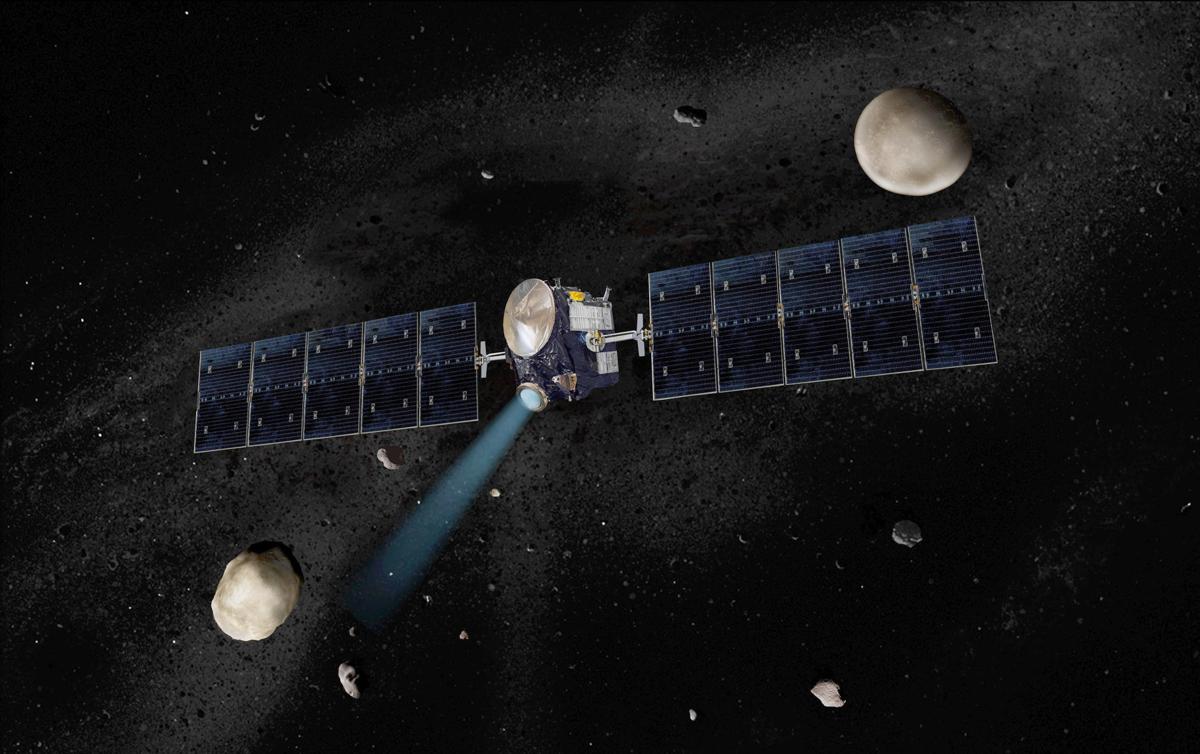The metaphorical sun has set on NASA’s Dawn spacecraft, ending 11 years of exploration in the asteroid belt, but researchers, including some in Tucson, expect the data garnered by the mission to fuel discovery for years to come.
The spacecraft, launched in 2007, ran out of fuel this week, outlasting the expected lifespan but preventing it from keeping its antennae pointed toward Earth to communicate with mission control and from turning its solar panels toward the sun for power.
Dozens of researchers from the Tucson-based Planetary Science Institute have worked or are working on the mission, some since its conception.
Institute CEO and Director Mark Sykes, who is also a mission co-investigator, was part of the team that developed the mission concept in 1999.
He was also involved in proposing the revolutionary and hyper-efficient ion propulsion system that, for the first time, allowed a spacecraft to orbit two celestial bodies in one mission. The ion propulsion system curtailed the amount of fuel the craft depended on and shrank the spacecraft and launch vehicle size of Dawn considerably.
Dawn visited the largest objects in the main asteroid belt: the asteroid Vesta and the dwarf planet Ceres, which it is currently orbiting freely.
Asteroid belt objects have been described as time capsules from the early solar system because they formed early and have been relatively undisturbed in the time since. With this in mind, scientists sought to collect data that would teach us about the formation and evolution of the solar system.
This is the first time the belt, located between Mars and Jupiter, has been explored by spacecraft.
Through Dawn’s exploration of Vesta and Ceres, researchers learned about their composition, geology, history and more.
It’s possible that most planets in the universe are dwarf planets like Ceres, Sykes said, so understanding them is paramount.
“By understanding more about their nature and how they work and what they have, it gives us insight into what might be going on in other solar systems,” he said.
Data collected also suggests the early solar system was much more dynamic than first thought, according to Sykes.
Sykes said discoveries thus far are “just the teaser reel, just the beginning. There’s a lot more to be learned” from the data Dawn instruments have collected. “Now we get down to the meat and potatoes. That’s the real payoff for all of us who have invested our taxes in these missions.”
One of Dawn’s greatest contributions was the questions that cropped up as scientists took a closer look at these once-hidden objects, Sykes said.
“If possible, I’d want to know if there are water reservoirs on Ceres,” he said. “If there are, I want to know if they have life.”
NASA must adhere to strict planetary protection laws to safeguard potential life. Dawn will orbit Ceres without crashing for at least 20 years and there is more than a 99 percent chance that it won’t crash for another 50 years.
It is the second spacecraft to be retired by NASA this week. The Kepler Space Telescope, which was used to discover thousands of planets around other stars, also ran out of fuel.





